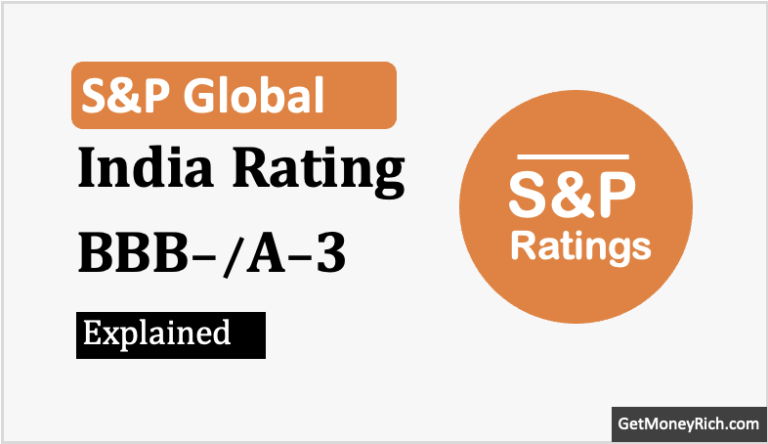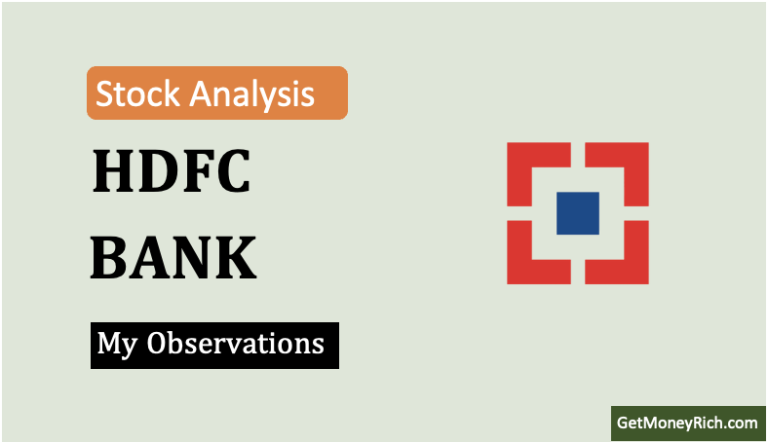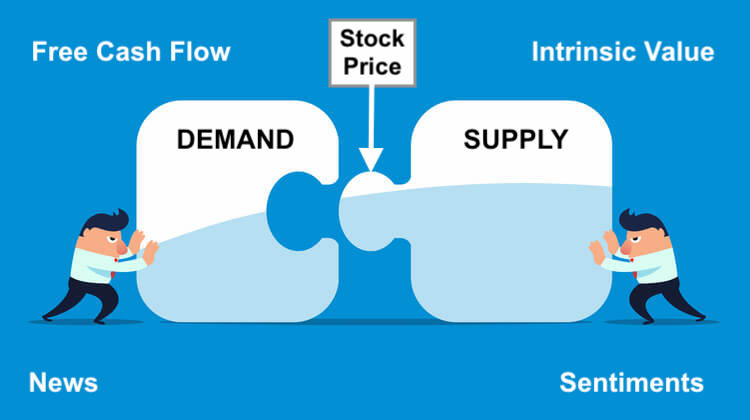The recent fall in share prices of HDFC Bank and HDFC Ltd has created a buying opportunity for long-term investors, is it so? Despite the negative market sentiment, the fundamentals of both entities remain strong. Their financial performance is strong with a diversified loan portfolio. The twins also have a moat in terms of experienced management. In this article, I’ll share my view on a potential buy opportunity.
On 05-May-23, HDFC Bank and HDFC Ltd’s shares experienced a sharp price decline of 5-6%. As of 4th of May’23, HDFC Bank’s share price closed at Rs.1,729. On the 5th of May’23, it closed at Rs.1,627.
The investors were worried about the impact of MSCI’s adjustment factor on the merged entity’s weight. In this article, I’ll share my views about the potential investment opportunity presented by both entities.
I will take into account the recent market sentiment and the fundamental strengths and weaknesses of HDFC Bank and HDFC Ltd.
Let’s discuss more about it:
Recent MSCI Announcement and Market Sentiment
As we know, HDFC Bank and HDFC Ltd’s merger will get completed by July’2023. On April 28th, MSCI announced that it would use an adjustment factor of 0.50 for computing the weight of the merged entity of HDFC Bank and HDFC Ltd. Before we can discuss this latest news, let’s first understand what is the meaning of the MSCI adjustment factor.
What is the MSCI adjustment factor?
MSCI, Morgan Stanley Capital International, is a leading provider of investment decisions, etc. MSCI adjustment factor is a measure used to account for the impact of corporate actions, such as mergers and acquisitions, on the weight of a stock in a given index.
When a corporate action occurs, like the HDFC twins merger, MSCI may adjust the weight of the stock in the index to reflect the new market capitalization of the entity. The adjustment factor is used to calculate this new weight, taking into account the potential impact on the free float of the stock.
An adjustment factor of 0.50 means that MSCI will calculate the weight of the merged entity of HDFC Bank and HDFC Ltd as half of its market capitalization. In contrast, had the new adjustment factor would have been 1.1, it would mean that MSCI would calculate the weight of the merged entity as 110% of its market capitalization. A lower adjustment factor would result in a lower weight for the stock (HDFC Bank post-merger) in the index.
Why MSCI gave an adjustment factor of below 1x?
MSCI decided to use a lower adjustment factor, below 1.0, of HDFC Bank after its merger with HDFC Ltd. This decision was made due to the merger’s potential impact on the free float of both entities’ shares.
As a result of this announcement, both HDFC Bank and HDFC Ltd’s share prices experienced a sharp decline, with many investors worried about the implications of this decision on the future prospects of both entities.
However, it is important to note that while the short-term market sentiment may be negative, the long-term fundamentals of both entities remain strong.
HDFC Bank is one of India’s largest private sector banks, with a strong track record of financial performance. While HDFC Ltd is one of the country’s leading housing finance companies, with a vast network of borrowers and an experienced management team.
As such, I’m personally considering the recent decline in share prices of the HDFC twins as a buying opportunity for long-term investors.
Fundamental Analysis
HDFC Bank has a strong track record of financial performance, with a consistently high return on equity (ROE) and low non-performing asset ratios (Net NPA).
| Description | HDFC Bank |
| (Consolidated) | Mar-23 |
| Basic EPS (Rs.) | 82.64 |
| Return on Equity (ROE %) | 15.89 |
| Gross NPA (%) | 1.12 |
| Net NPA (%) | 0.27 |
In addition, the bank has a solid capital base and a diversified loan portfolio, which includes retail, corporate, and agriculture loans. While the bank’s loan growth has slowed in recent years due to a challenging economic environment, it is expected to rebound as the economy recovers.
HDFC Ltd, on the other hand, has a vast network of borrowers and a diversified loan portfolio. It has a significant presence in the affordable housing segment. The company’s financial performance has been strong, with a consistently high return on equity and low non-performing loans ratio.
| Description | HDFC Ltd. |
| (Consolidated) | Dec’2022 |
| Basic EPS (Rs.) | 124.97 |
| Return on Equity (ROE %) | 12.56 |
| Gross NPL (%) | 1.49% |
Additionally, the company has a solid capital base and a strong management team.
What I’ll Do As A Long-term Investor
I believe, despite the recent decline in share prices, both HDFC Bank and HDFC Ltd remain strong entities with solid fundamentals. While the short-term market sentiment may be negative, the long-term prospects for both entities remain positive.
Given the expected recovery of the Indian economy in the coming years, I feel that the HDFC Bank will have a big role to play for India.
As a long-term investor, I consider investing in both entities as a potential buying opportunity.
[Disclaimer: It is important to note that investing in stocks carries inherent risks, and investors should conduct their own due diligence and consult with their financial advisors before making any investment decisions. What is being shared here are only my personal views.]
Conclusion
As a long-term investor, the recent decline in HDFC Bank and HDFC Ltd’s share prices, I see it as a potential buying opportunity. I realize that the short-term market sentiment is negative, but I see the long-term fundamentals of both entities as strong. Both companies have reported solid financial performance.







Thank you for writing so beautifully article about the Analyzing the Recent Fall in HDFC Bank and HDFC Ltd’s Share Prices [MSCI adjustment factor]. Special thanks to you for discussing HDFC Bank and HDFC Ltd’s Share Prices [MSCI adjustment factor.